Flower Meanings
Anemone


The Meaning of Anemone
The anemone has so many different meanings, so we’ll start with fairies:
- Anemones are a symbol of fairies and their world of twilight
Legend has it; fairy folk are believed to hide in the anemone’s petals and close them up when there is a threat of rain. [1]
Greek legends say that Anemos, the Wind, sends his namesakes the Anemones in the earliest spring days as the heralds of his coming. Pliny affirmed that they only open when the wind blows, hence their name of Windflower, and the unfolding of the blossoms in the rough, windy days of March has been the theme of many poets:
‘Coy anemone that ne’er uncloses
Her lips until they’re blown on by the wind.’
Culpepper also uses the word ‘windflower.’ In Greek mythology, it sprang from the tears of Venus, as she wandered through the woodlands weeping for the death of Adonis –
‘Where streams his blood there blushing springs a rose
And where a tear has dropped, a wind-flower blows.’ [2]
Some other common meanings include:
- Protection against evil and ill wishes
- The approach of a rainstorm when the petals close up
- Forsaken or forgotten love and affection
- Anticipation and excitement for something in the future
- The death of a loved one or the loss of them to someone else
- Protection against disease and illness
- The arrival of the first spring winds
- Bad luck or ill omens
There are 120 species of anemones, all also commonly called ‘windflowers.’
Greek myth gives the anemone two meanings, the arrival of spring breezes and the loss of a loved one to death, while the Victorian took a bit of a different look at the beautiful blooms, using them to symbolize a forsaken love.
Chinese and Egyptian cultures considered it a symbol of illness because of the coloring, while European peasants carried them to ward off disease. The flower’s natural reaction of closing up at night and opening for the morning means it symbolizes anticipation for something soon to arrive. It’s a symbol of bad luck to many Eastern cultures, but Westerners tend to see it as a protection against evil and ill luck instead. [3]
What Does Anemone Smell Like?
The anemone has very little scent and doesn’t really rely on the visits of insects for the fertilization of its one-celled seed-vessels, which are in form like those of the butter-cup, arranged in a mass in the center of the many stamens, and are known as achenes. [2]
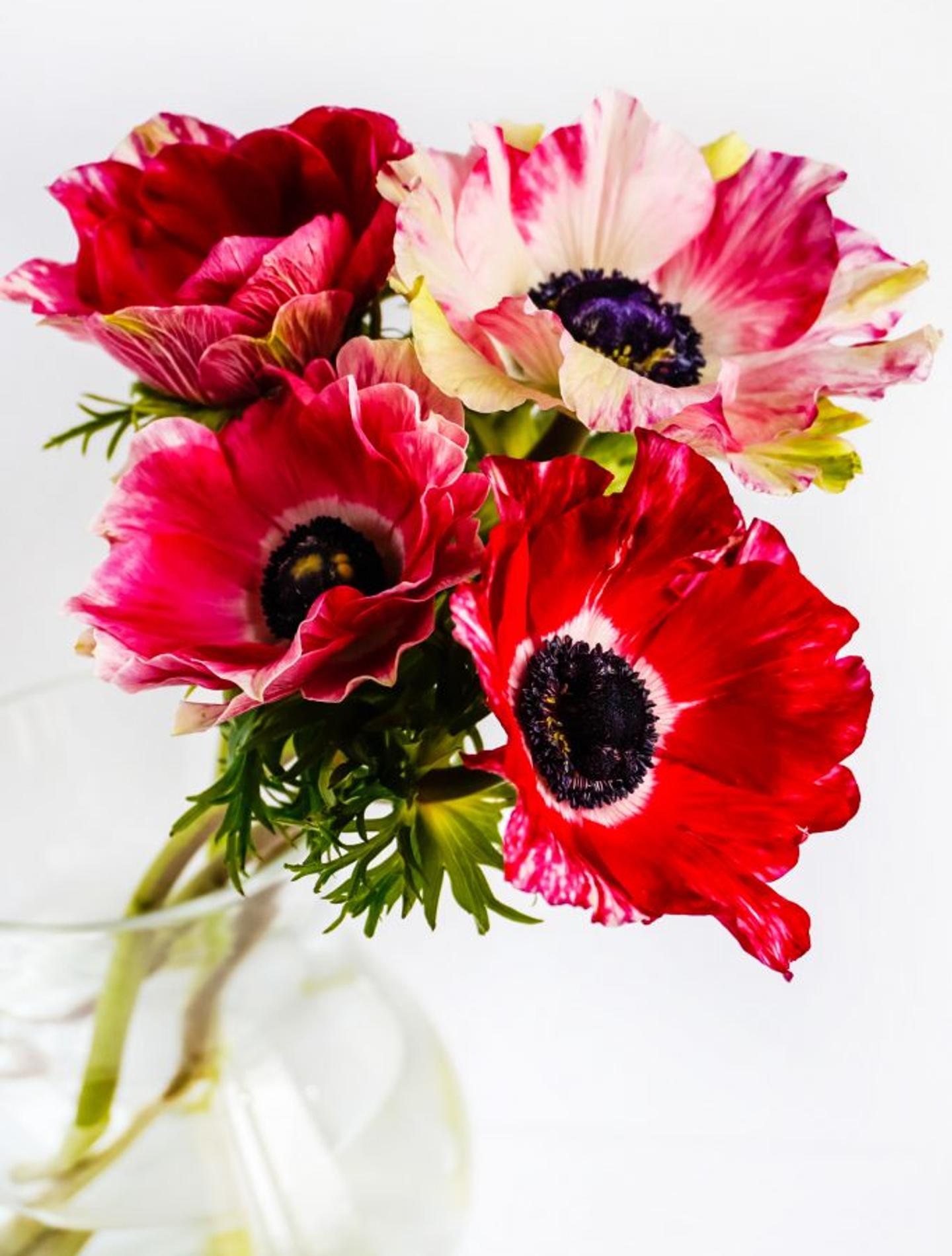
"Thy subtle charm is strangely given, My fancy will not let thee be, Then poise not thus ‘twixt earth and heaven, O white anemone!"
Elaine Goodale
The History of the Anemone
Anemones grow wild throughout Europe, North America, and Japan.
Researchers believe the genus originated in Japan, but since they’re found throughout the entire Northern Hemisphere, it’s almost impossible to pin down exactly where they came from.
Most anemones are used in garden meadows, and the most popular species is the Japanese anemone (Anemone hupehensis), which blooms in autumn and is also known as poppy anemone due to its similar appearance to a poppy.
Anemone is also used in traditional folk medicine around the world. Back in the day, it was common to use anemone to treat stomach spasms and menstrual pains. The Ancient Romans used the blooms to treat bruises and fever. For some, it also helps to alleviate panic attacks. But there isn’t much scientific evidence to prove it’s actually effective. These flowers consist of various medicinal compounds, including triterpenoid saponins, which have anti-cancer activities. Some of the compounds of anemone have anti-inflammatory, sedative, analgesic, antimicrobial, and antioxidant activities as well. They’re also a prevalent plant used in ethnopharmacology.
Folk medicine specialists use anemone to treat dysentery, malaria, ulcers, arthritis, hepatitis, and parasitic diseases.
In traditional Chinese medicine, Anemone raddeana is used to treat arthritis and skin problems. The rhizome of the same species is also used to treat epilepsy and neurosis. Another species called Anemone vitifolia, commonly known as wild cotton, is used in China to treat various injuries, rheumatism, and other diseases.
Anemone is also a common plant in the ethnomedicine of India, America, Korea, Europe, and other countries. People use Anemone biflora bulb to treat burns and cuts. Back in the day, they also used the mixture of anemone’s root to treat various eye diseases. [3]
DID YOU KNOW - Anemone Fun Fact
Anemone leaves are simple or compound with lobed, parted, or undivided leaf blades. The leaf margins are either toothed or entire. [4]
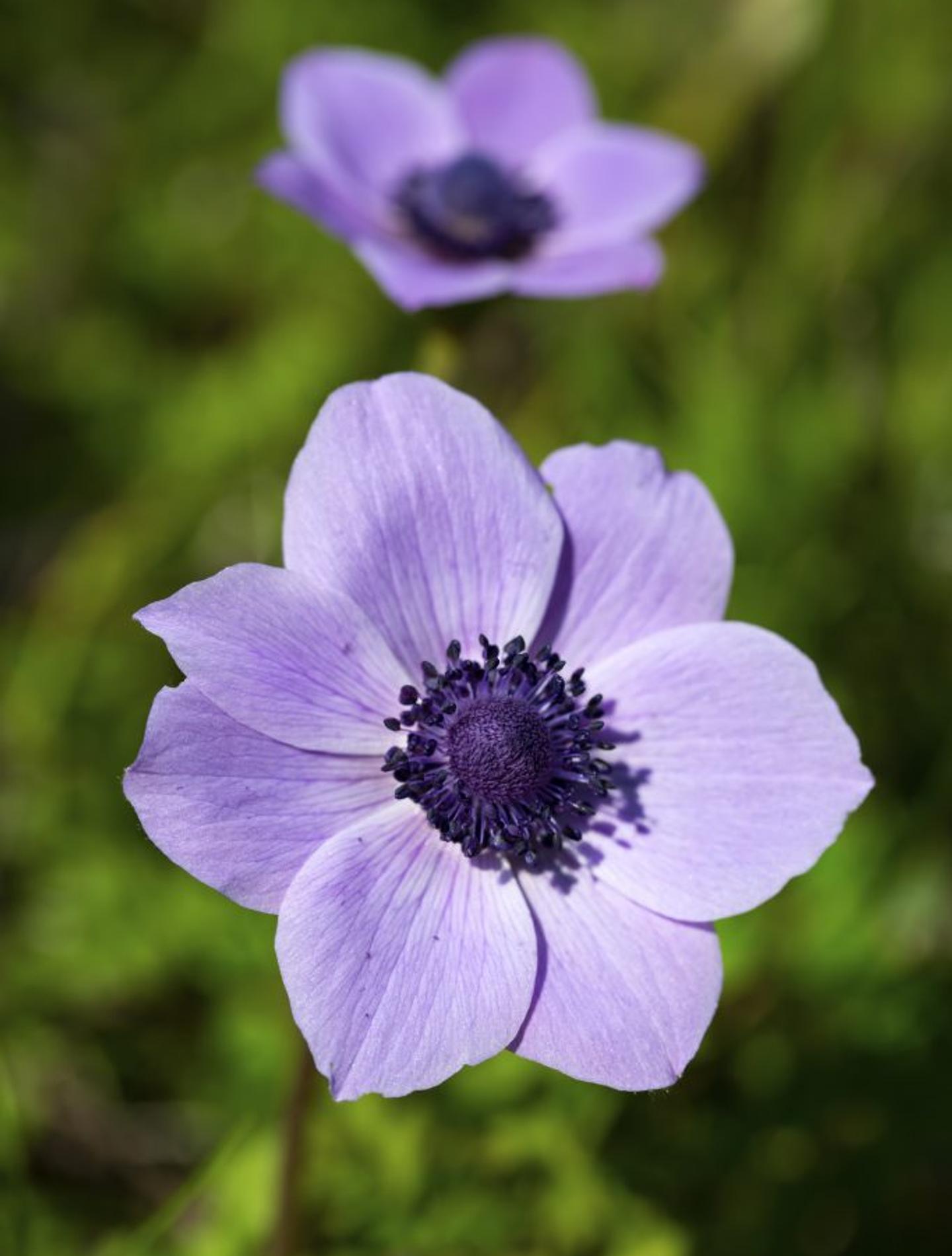
How to Grow Anemone
Such a hot-topic blossom, it’s no surprise we’d want to learn how to grow some for ourselves!
These spring or fall-blooming plants will most definitely add a pop of color to your garden with their vibrant reds, whites, pinks, yellows, and purples.
So, without further ado, let’s get planting:
- Choosing a planting time is super important and should be based on the blooming cycle of your chosen species of anemone. Plant spring bloomers in the fall, and fall in the spring. The different species of anemones all have different root structures, making the planting method vary.
- No matter the species, most anemones like at least 4 hours of sun per day and well-draining soil that remains quite moist.
Once planted, anemones become pretty sufficient!
Just be sure to water them regularly when it doesn’t rain, and try to keep the soil lightly moist.
Pro Tip: Water slowly to allow the soil to absorb as much water as possible.
[5]
DID YOU KNOW - Anemone Fun Fact
Anemones are often depicted in images of the Crucifixion or alongside the Virgin Mary as she mourns the death of Christ. It is said that the red anemones that are included in these paintings symbolize the blood that Christ shed. [4]
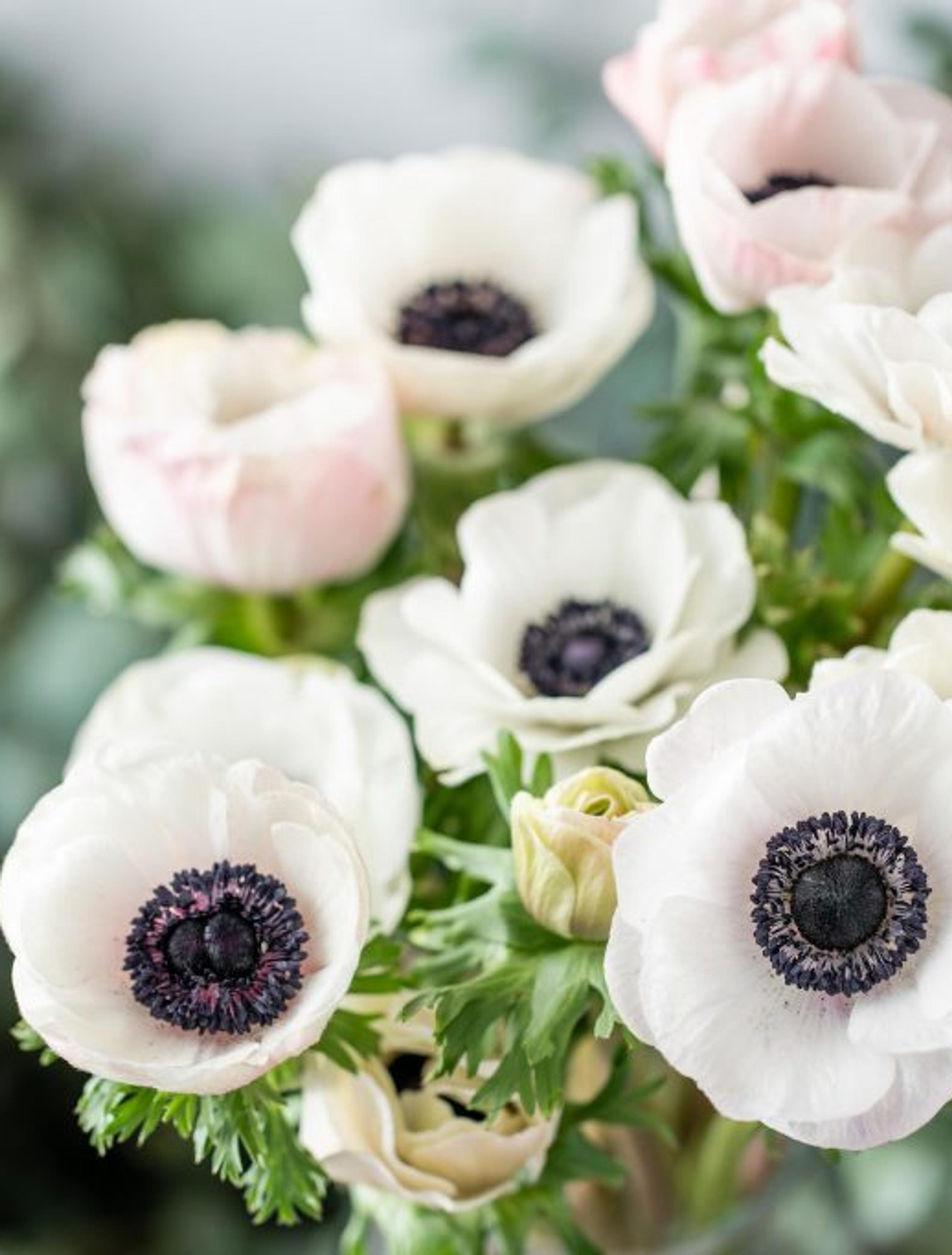
How to Care for Anemone
Alright, and now onto how you should care for your freshly cut anemone.
Not only are these blooms soo gorgeous, but they also last, making them ideal for wedding bouquets and centerpieces.
- Before you place your fresh-cut anemones in their vase, be sure to re-cut the stems at an angle with a sharp knife to allow for better water intake.
- Once you put them in water, place them in a space with medium-light, and that remains relatively cool. These blooms prefer cooler water as well and will open quickly in warm light and heat.
- Replace the water daily, and be sure to check on them quite frequently, as they are heavy drinkers and may need more water.
- If you want to go the extra mile, as with hydrangeas, keeping your anemones stored in the fridge overnight will also help to extend the life of your beautiful blooms! [6]
When to Send Anemone as a Gift
Anemones make the perfect gift for someone looking forward to a big move, marriage, or the birth of a baby, a get well gift, or eve wishing someone good luck! [1]

References:
- 1 - The Hazel Tree
- 2 - Botanical
- 3 - Flower Meaning
- 4 - Just Fun Facts
- 5 - The Spruce
- 6 - Anemones
Flower Meanings — keep discovering
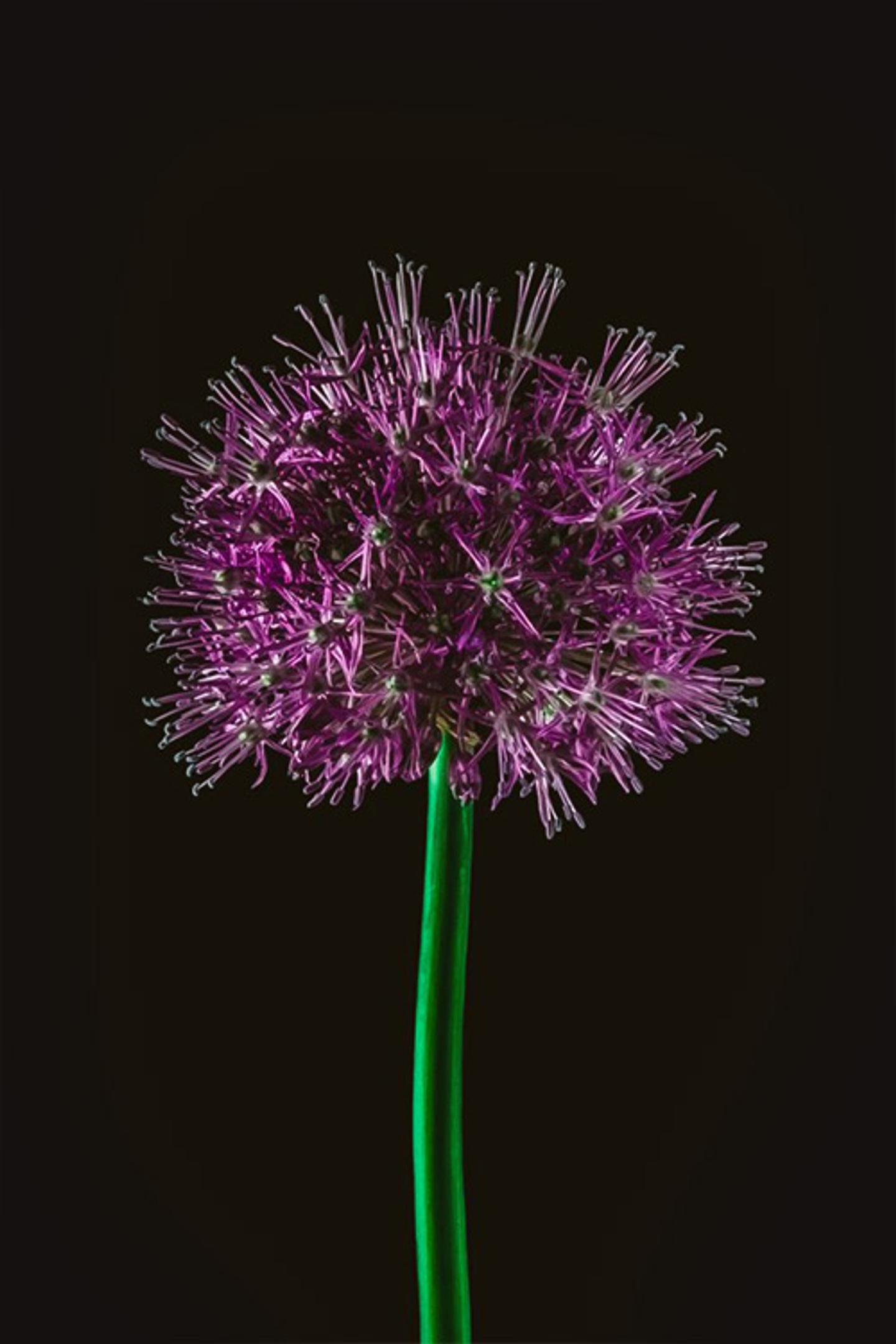
Allium
Often referred to as “Gladiator,” “Goliath,” and “Globemaster,” there’s no doubt in our minds that this flower is just as enchanting and unique as it appears. Each bloom is packed with hundreds of tiny, densely packed individual flowers, simply adding to the beauty and wonder of these ornamental onions. (Yes, we said onions). [1]

Alstroemeria
The term Inka means “ruler” or “lord” in Quechua, the main language of the Inca Empire. And like the Incas, alstroemeria rules over gardens and bouquets alike, with its incredible colors and tiger-pattern throats.
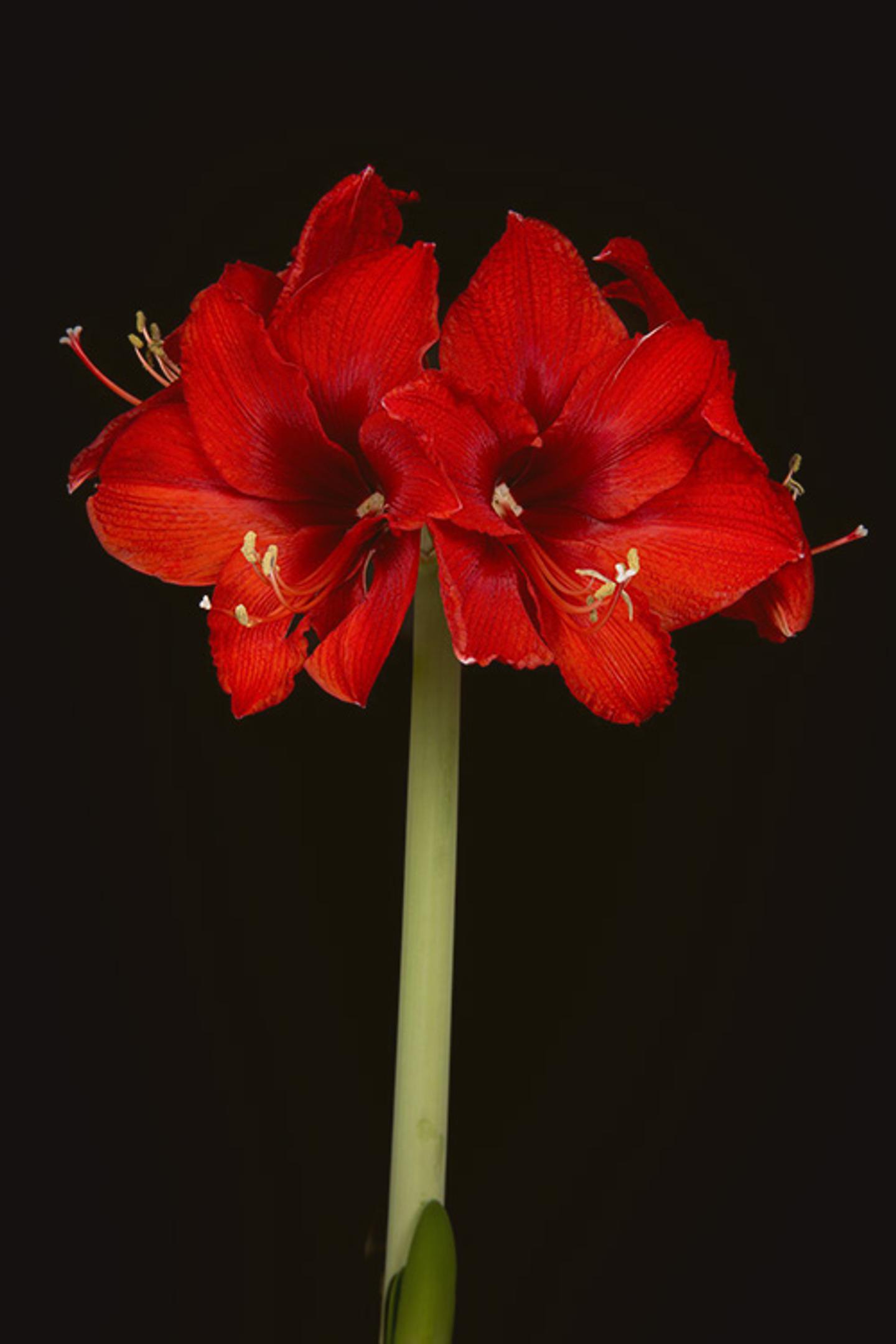
Amaryllis
These big beautiful blooms may be a holiday favorite, but they’re actually derived from a group of tropical plants from Central and South America.
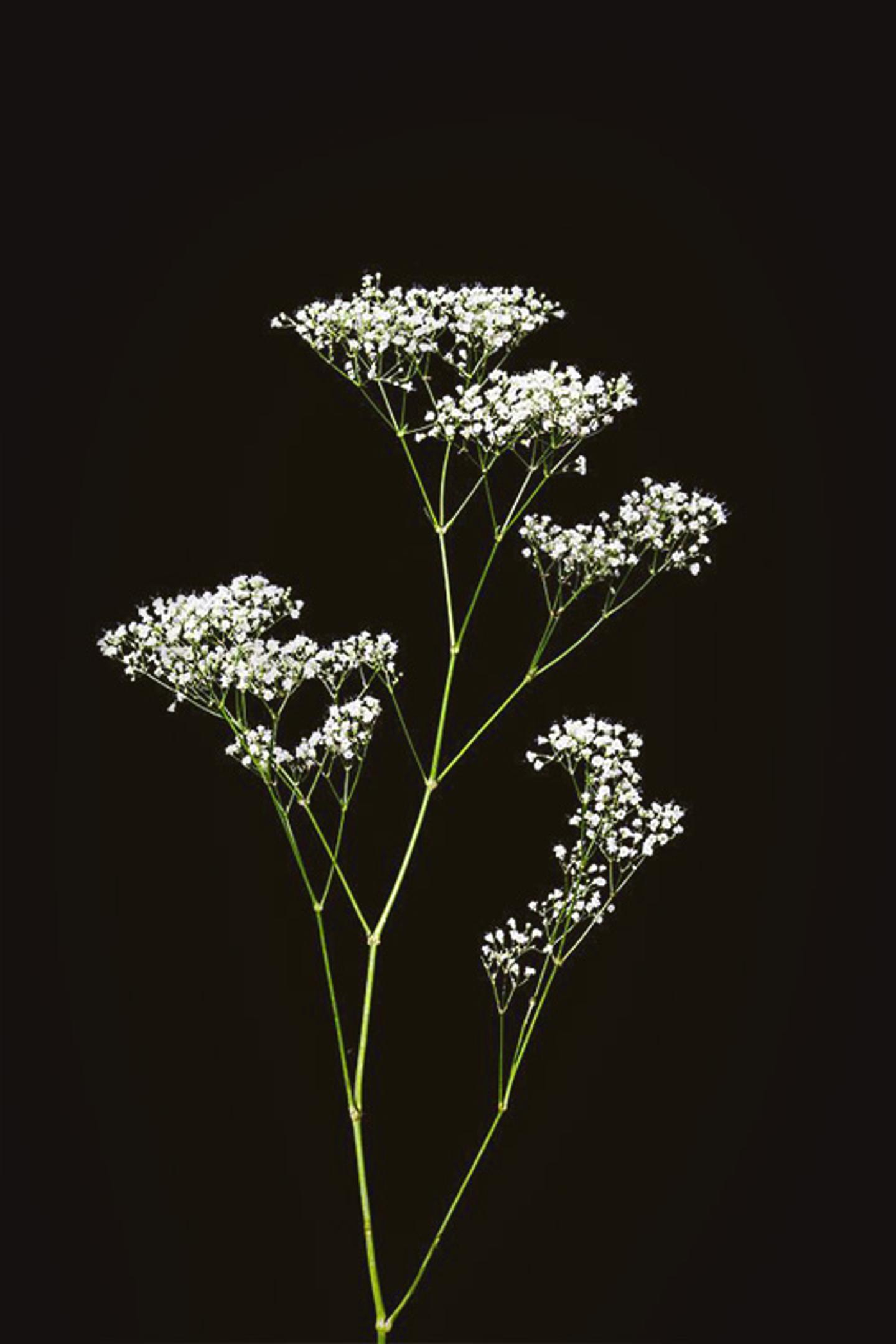
Baby’s Breath
Baby’s breath plants have become somewhat of a cliché in floral arrangements, but you may fall in love with this plant all over again in the flower garden. The plants look dainty but hang tough in dry sandy soils, and they’re deer resistant to boot.

Allium
Often referred to as “Gladiator,” “Goliath,” and “Globemaster,” there’s no doubt in our minds that this flower is just as enchanting and unique as it appears. Each bloom is packed with hundreds of tiny, densely packed individual flowers, simply adding to the beauty and wonder of these ornamental onions. (Yes, we said onions). [1]

Alstroemeria
The term Inka means “ruler” or “lord” in Quechua, the main language of the Inca Empire. And like the Incas, alstroemeria rules over gardens and bouquets alike, with its incredible colors and tiger-pattern throats.

Amaryllis
These big beautiful blooms may be a holiday favorite, but they’re actually derived from a group of tropical plants from Central and South America.

Baby’s Breath
Baby’s breath plants have become somewhat of a cliché in floral arrangements, but you may fall in love with this plant all over again in the flower garden. The plants look dainty but hang tough in dry sandy soils, and they’re deer resistant to boot.
Ready to send beautiful flowers?
Our guided experience helps you send a one-of-a-kind arrangement perfect for every occasion.
Send Flowers